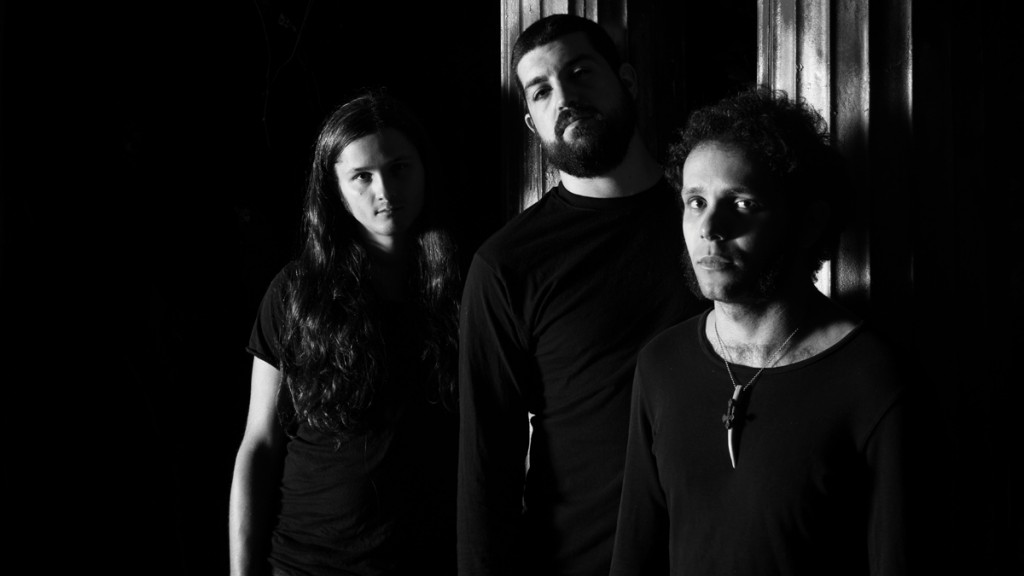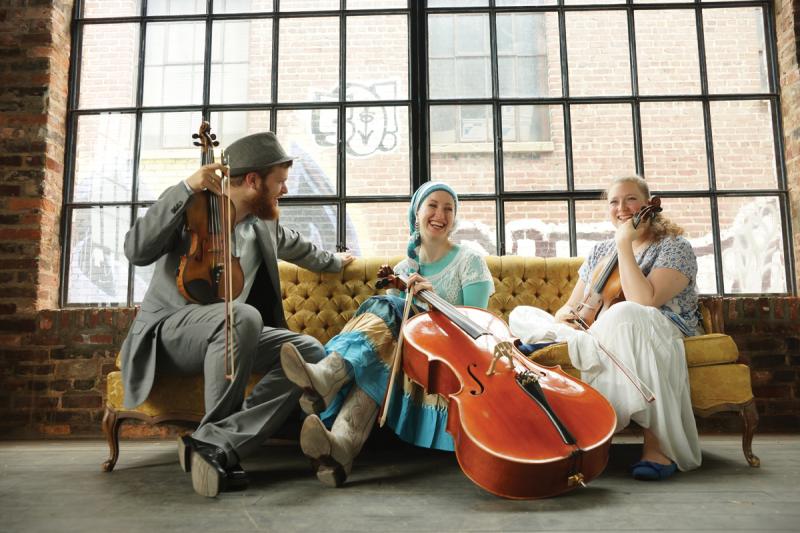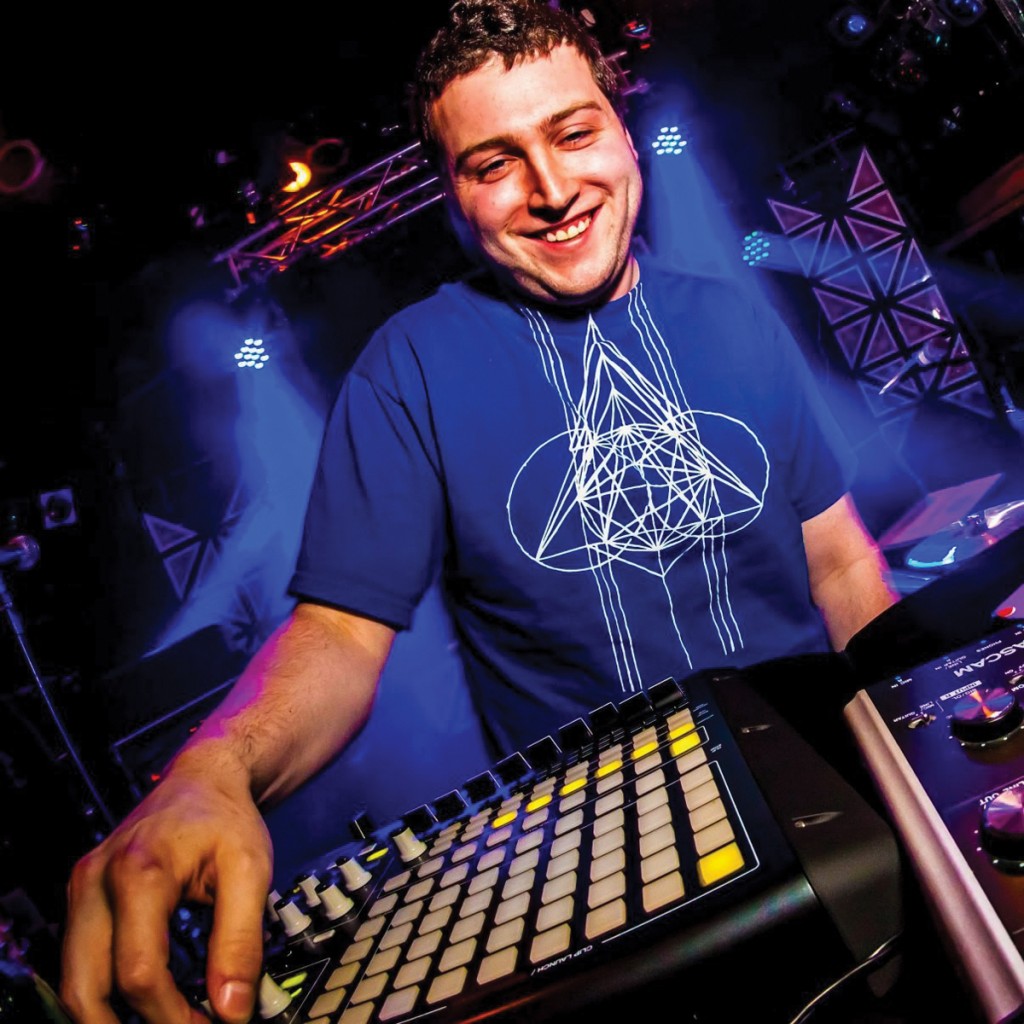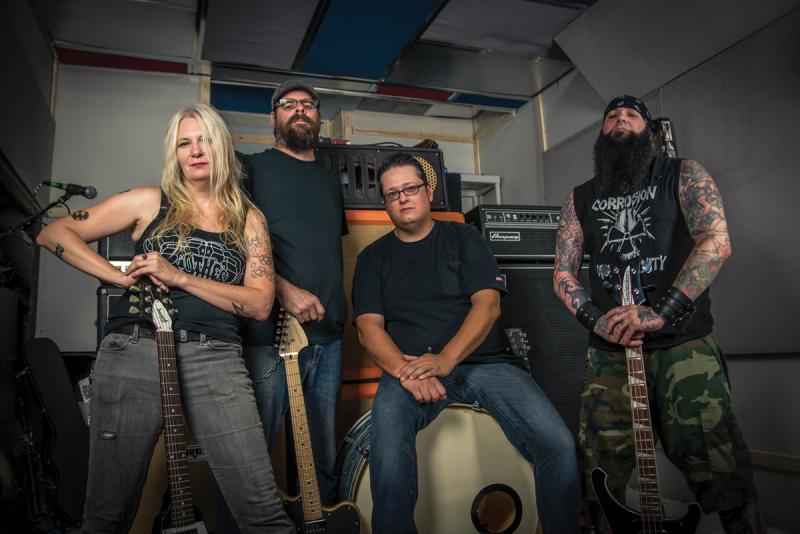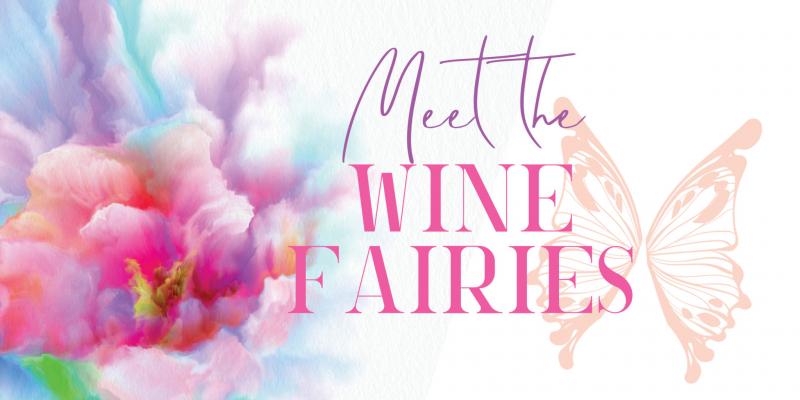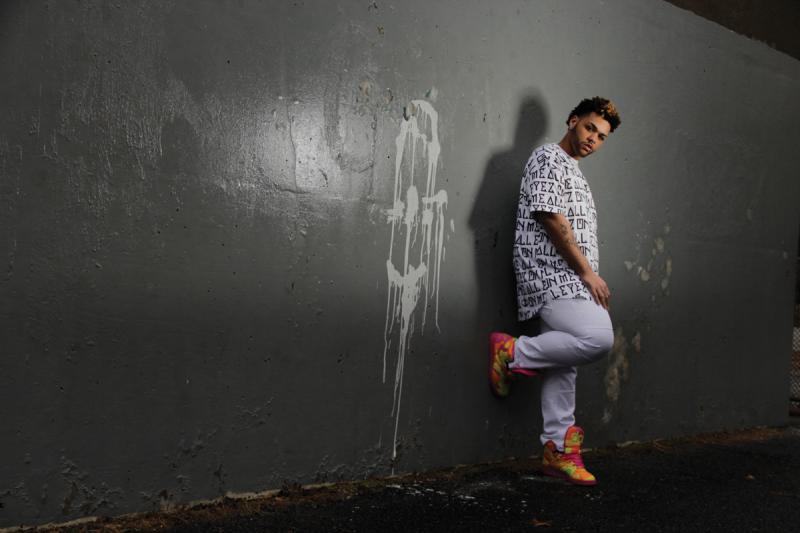
Eight years ago, Rolling Stone magazine famously—or, perhaps, infamously—declared Baltimore’s music scene the best in the nation. Back then, Wye Oak, Beach House, Dan Deacon and Celebration ruled the local roost, buoyed by critical hosannas from not only RS, but a peck of other national publications as well. Simultaneously making (sound)waves at the time: local band Arbouretum, Blaqstarr and Ponytail. While certainly warranted, all the intense attention seemed arbitrary, too, just as it did when, at various times, Seattle, Brooklyn and Chicago experienced similar ready-for-their-closeup moments from the media. In truth, local music scenes, by their very nature, go through peaks and valleys, but a city’s music community’s creativity never entirely abates. Someone’s always making terrific music, as the bands, ensembles and solo artists profiled here—who work in genres as far-flung as hip-hop, metal, classical, jazz, bluegrass, pop, indie rock, jam band and R&B—amply prove. Some hover at the edge of stardom; some already boast niche notoriety; and some only just hatched. Some names you may recognize; some you probably won’t. Collectively, they represent a vibrant, innovative, thriving music scene, worthy of the spotlight regardless of whether Rolling Stone and other “best-ism” arbiters have noticed. —Michael Yockel
01 Kotic Couture Kyle
“Kotic Couture” Wilson has certainly come a long way since his rapping career started at under-21 parties and high school events. He performed his music—which touches on club, pop and hip-hop—on the main stage at Baltimore Pride in 2014 and at Artscape in 2015, and he’s a nominee for best hip-hop artist at this year’s Maryland Music Awards. As someone who identifies as queer, Wilson, 24, didn’t find his place in the music scene easily. “Within the hip-hop spectrum itself, there’s a lot of homophobia in the culture,” he says. “That’s what led me to Baltimore club music, because you’re allowed to do more—there’s no barriers.” Right now, he’s working on a new EP that he hopes to release this summer or early fall. “It’s gonna be a lot more fun, energetic, dance music,” he explains. “More free. I think it’s gonna be the most fun project I’ve put out so far.”
> Check for news and upcoming shows at Koticcouture.com. —Marc Shapiro
02 Black Lung
When guitarists Dave Cavalier (29) and Adam Bufano (28) and drummer Elias Mays Schutzman (28) got together to jam when their respective bands had downtime, it was just that: two guitars and drums. And while most bands would have opted for the more traditional rock band format, Black Lung remains without a bassist after evolving into its members’ main musical focus. The absence is hardly audible, as Black Lung’s heavy, doomy, bluesy rock sound is punctuated by a pair of big, overdriven guitars, both played through guitar and bass amps, plus cavernous drums with thunderous cymbal crashes, all of which serve as the backdrop for Cavalier’s soul-tinged vocals. Their energetic second album, See the Enemy, was just released via the German label Noisolution. The band embarks on a tour of Europe, its third—and longest, to date—of the continent during May and June. Plus, they play Muskelrock in Sweden in June. “I’m hoping that we’re gonna rub some elbows with the right people there,” says Cavalier, “and that can take us one step further.”
> Hear Black Lung at Metro Gallery on April 30. —M.S.
03 Chamber Encounters
In an effort to reboot the traditional classical music concert experience, Chamber Encounters —violinist Yonatan Grinberg (29), violist Sarah Lowenstein (30) and cellist Andrea Grinberg (29)—performs in an immersive environment, virtually cheek- by-jowl with the audience, and with the core trio, augmented by a guest artist, facing each other. Its repertoire roams all over the classical map, with a recent concert zigzagging from legends Mozart and Borodin to contempos Samuel Barber and John Zorn to the underappreciated 19th-century composer/conductor/violinist Eugene Ysaye. “Every piece is introduced by the performers,” says Yonatan Grinberg, “highlighting special elements of the music, its interpretation, its dramatic and thematic elements through demonstration and discussion. We act as tour guides, sharing what moves us most and highlighting points of interest, but we will not tell the audience what to think and feel.”
> Hear Chamber Encounters, with guest violinist William Herzog, in the Gordon Center’s Morstein Performa on June 16.—M.Y.
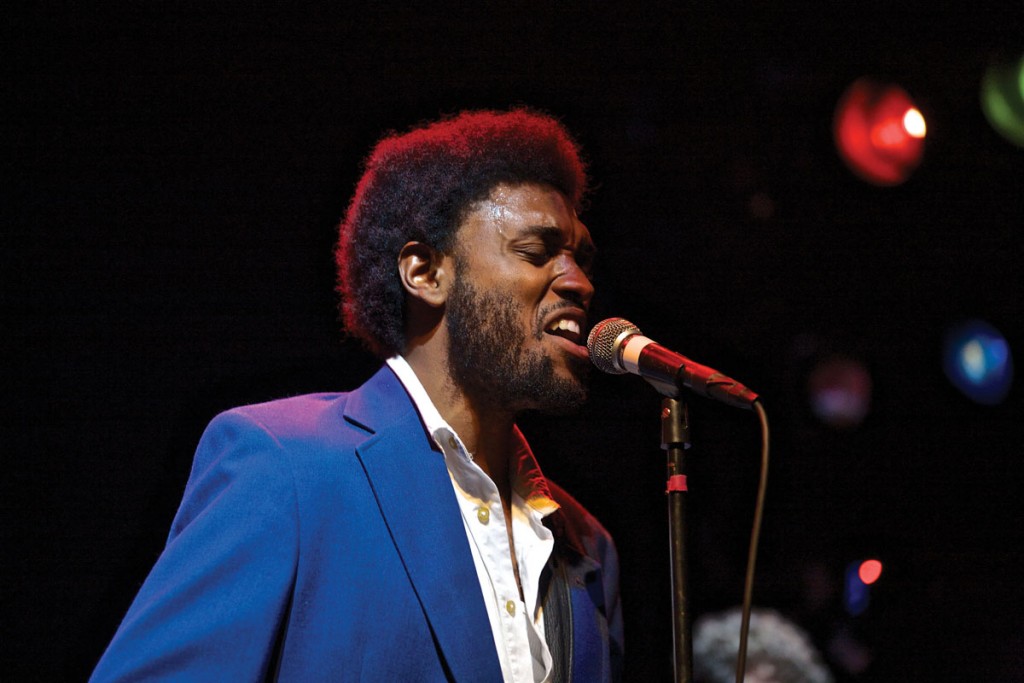
04 Brooks Long & the Mad Dog No Good
Brooks Long’s music sounds as if it came from eras long before the 30-year-old singer and guitarist was born. “This has a definite flavor from the past,” says Long, “when soul and R&B was more aggressive than it is today.” The tight, funky three-piece band, often accompanied by horns, shines with Long’s vocals, which range from Michael Jackson-smooth to funky rasps reminiscent of James Brown. But he’s no throwback artist. The band puts a fresh spin on classic soul, R&B and early funk, fusing it into a kind of “rock ‘n’ soul.” That sound earned the trio mention in City Paper’s 2014 Best of Baltimore issue, and last year it performed on the mainstage at Artscape. Its debut full-length album, Mannish Boys, is set for release in May. “This is kind of where you set your territory, and I’m trying to make it as wide as I can get it,” says Long. “Everything has an old-school vibe to it, but different eras.”
> Hear Brooks Long & the Mad Dog No Good at the Ottobar on May 13. —M.S.
05 Blacksage
The members of Blacksage want their brand of pop music to evoke a certain emotive environment when they perform live. “The most important thing is the bass—lots of bass—and we need it dark,” says Drew Scott, 29, half of the duo. “We want you to feel like you’re in a basement and it’s way too loud—and sexy.” Scott’s laid-back, downtempo layers of electronic music perfectly accompany Josephine Olivia’s (24) hauntingly expressive vocals, which commandingly conjure lovesick tales. Their debut EP, Sixtape (released by Baltimore’s Friends Records), earned Top 10 local albums status in City Paper in 2014. That was followed by the full-length Basement Vows in 2015. A second full-length album, Shivers, should arrive this summer. The new album expands on the sounds of previous efforts and moves into some jazzier territory, with Scott working samples into some of the music. “We’re definitely branching out a bit. It’s more experimental, a little weird,” Olivia says. “Some of the songs are not following the basic pop-song formula.”
> Check for upcoming shows at blacksagemusic.com. —M.S.
06 Deaf Scene
This instrumental trio’s music consists of textural layers that go from bass- and drum-heavy grooves to hard-driving guitar riffs to tripped-out soundscapes, often in the same song. “It’s a good thing if you’re not pigeonholed into a specific genre,” says guitarist Dave Fullerton (27), whose use of guitar effects and loops greatly expands the band’s sonic space. “It kind of defeats the purpose of being an original musician.” One might describe Deaf Scene as playing “instrumental progressive psychedelic rock,” and its diverse sound has earned the band fans and gigs across the musical spectrum. Deaf Scene hopes to release a new EP this fall, which would be the first to feature current drummer Brett Schatz (27). Fullerton notes that Schatz has challenged him and bassist Eric Courtney (26) musically, and the band’s music has evolved accordingly: “We have to constantly be changing in order to stay relevant as an instrumental band.”
> Hear Deaf Scene at Domefest, held in Bedford, Pa., from May 19 to May 21. —M.S.
07 ELM
Electric Love Machine, or ELM, seems a fitting name for a band that plays “space disco fusion,” as keyboardist Jon Brady (27) calls it, a high-energy, jam-heavy danceable psychedelic rock. ELM, whose four members range in age from 23 to 39, grew out of electro-jam band Segway three years ago, and with new members and a new name came a renewed focus on songwriting and having good songs at the foundation of improvisation. The band has become a mainstay at West Virginia’s Camp Barefoot festival and the Mad Tea Party Jam in Pennsylvania, and it also performed at 2015’s All Good Music Festival in West Virginia. Brady hopes the band will get into the studio this summer to record an album that he says will showcase a more mature ELM than the one heard on the band’s 2013 debut, released within months of lead singer and guitarist Jon Wood joining the band. “Our songwriting has changed so much,” says Brady, “so I think it’ll be a completely different monster when it comes out.”
> Hear ELM at the Merryland Music Fest at Merriweather Post Pavilion on July 9. —M.S.

08 Great American Canyon Band
Collaborators both personally and professionally, the husband-and-wife duo of Paul (vocals, guitar) and Kris Masson (vocals, bass) form the core of the luminously poppy Great American Canyon Band, which just released its first full-length album, Only You Remain, whose 10 songs match a sometimes spectral/sometimes sweeping sound to heartfelt, yet understated, sentiments of love and devotion. “Sonically we try to push the sound and have it be as expansive as possible,” says Kris, who co-writes the band’s material with Paul. “But within that sonic territory lies just the two of us.” With Only You Remain, the couple, who admit only to being in their 30s, refine and distill the gorgeous ache they created on 2015’s Crash EP and a 2012 seven-inch: shimmering guitars, simmering country-folk-psychedelia, haunted/haunting production and seamlessly sympathetic vocals. (Guitarist Matt Boyer and drummer Edan Perrigo round out the band.) “We communicate through songwriting. It’s how we’ve always connected,” notes Kris. “It’s a beautiful space where you connect to yourself, and give yourself over freely and completely to whatever evolves. Our songwriting is as intimate as the relationship we share.”
> Great American Canyon Band tours the Midwest and West in support of its new album in May and June. —M.Y.
09 Patrick McAvinue
Patrick McAvinue started gigging before he could even drive. A fiddler and mandolin player, he first picked up on music at age 6. And while there were times in the beginning when he wanted to quit—playing classical music didn’t appeal to him—he felt musically at home when he discovered bluegrass. Now 28, McAvinue is one of the most in-demand players on the local bluegrass scene—and beyond. He has performed all over the world and currently tours with both Baltimore bluegrass supergroup Audie Blaylock & Redline and the roots quartet Charm City Junction, whose repertoire mixes old-time Irish music with bluegrass. When he’s not gigging, McAvinue is likely teaching one of his 50 students or at a recording session. While his talents are audibly virtuosic, McAvinue aims to keep his playing accessible, yet challenging, to the ears. “I always want to be able to sing what I play,” he says, “where everything is cohesive and my objectives are very clear so that I take the listener with me—and maybe turn their ear sideways a little bit.”
> Hear Patrick McAvinue with Charm City Junction at the Creative Alliance on June 9. —M.S.
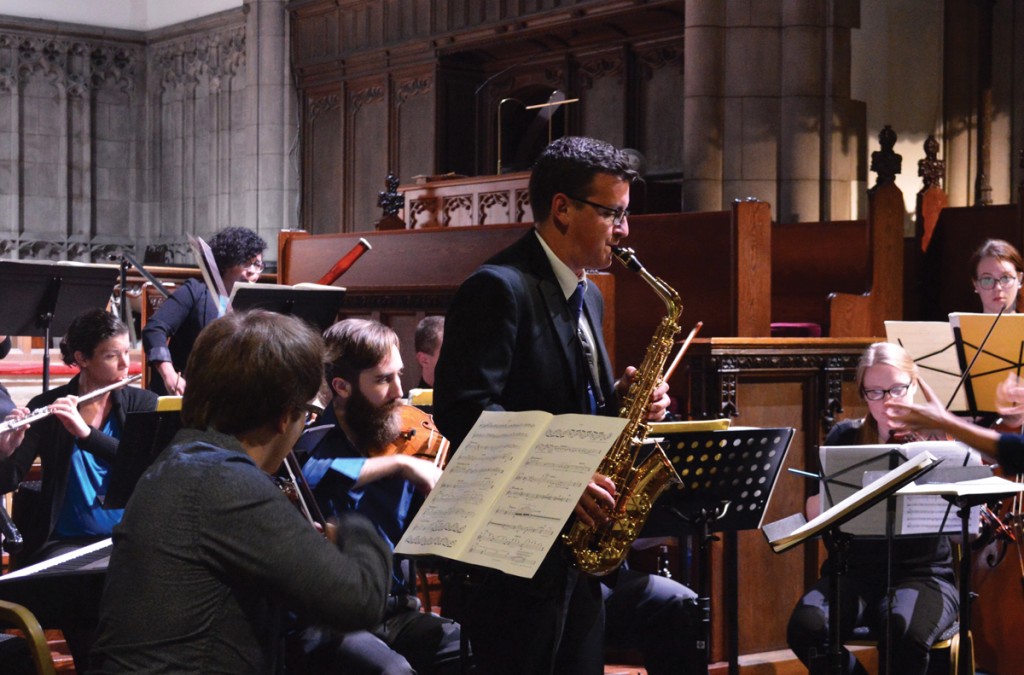
10 Symphony Number One
Amid classical music’s occasionally ossified culture, Symphony Number One, a chamber orchestra/collective with approximately 15 core members, seems almost brazen. It sponsors an international competition (Call for Scores) for original compositions. It commissions full-length new works from emerging composers. It performs and records those works, augmented by top local musicians. And, like an indie rock band, it assigns its members—who range in age from 21 to 42—administrative roles. “We offer our community a unique concert experience,” says founder/music director Jordan Randall Smith, 33, “pairing masterworks from the past with new works, almost as a complement to that work.” That translated into matching pieces by Fauré and Mozart with a new symphony by harpist Mark Fromm on Symphony Number One’s self-titled debut album, released last year. Just out: SNO’s Emergence EP, a concerto by saxophonist Andrew Boss. Adds Smith, “Offering composers a big canvas to ‘paint’ on is really our hallmark feature.”
> Hear Symphony Number One perform works by Call for Scores winner Andrew Posner and Nicholas Omiccioli (honorable mention), along with a piece by contemporary composer John Adams, at Emmanuel Episcopal Church on May 6 and 7. —M.Y.
11 SOOHAN
SOOHAN’s third album, this past February’s Global Gate 808, further cemented his goal of creating “electronic music for people who don’t listen to electronic music.” “I really wanted to make music from around the world accessible on the dance floor,” he says. The diversity of samples includes Polish folk music, Punjabi and Greek vocalists, a Malian duo and Baltimore-based rapper Rye Rye. “It was more of a tribute to their music than anything.” Blending American dance music and hip-hop with international genres—and emphasizing those from the Middle East and Africa—the album creates a danceable, global fusion. For the 27-year-old SOOHAN, 2015 was a huge year. He embarked on his first national tour: 11 festivals and 25 different cities. By this past March, he already had six summer festivals booked for 2016, and was in the process of adding dates for the rest of his summer tour.
> SOOHAN performs at the 8×10 on May 20, and in June at Enchanted Forest in Calif. and What the Festival in Ore. —M.S.
Whether she’s performing operetta (The Pirates of Penzance), opera (Die Fledermaus), musical theater (Sweeney Todd) or from the classical canon in concert (Schubert), soprano Laura Whittenberger imparts a bell-like voice, command of repertoire and sprightly stage presence to each endeavor. “I prefer to take a Renaissance- woman, spice-of-life approach to singing,” explains Whittenberger, 28, “since I’ve found I can learn something new from each experience.” Last year, Whittenberger, who earned her graduate performance diploma at Peabody Conservatory in 2014, released her debut album, Never Give All the Heart, a collection of vocal settings, accompanied by solo piano, drawn from the love poems of W.B. Yeats. “I’d describe them as folk/art song,” she says, “and they have a delicate, Irish feel to them. The words are rich with imagery and emotion, which make them a delight to sing.”
> Hear Whittenberger as part of a chamber music concert at An die Musik on May 18. —M.Y.

13 Legends of Et cetera
Friends since toddlerhood, Serena Miller (vocals/guitar/saxophone) and Mack Watson (keyboards), along with Serena’s cousin Graham vonBriesen (bass), formed their first band as middle-schoolers while Serena and Graham simultaneously attended Baltimore’s School of Rock. Later, co-School of Rock-er Jakob Coburn (drums) signed on, and, last year, as Legends of Et cetera, the quartet, who range in age from 16 to 18, released their 14-song debut album, Coyote, filled with insurgent guitars, keening keyboards and Miller’s clear, plaintive vocals. “At School of Rock, you’re forced to play with a different cast of people for every song you’re on,” explains Miller, 18, the band’s songwriter, “and it prepares you for dealing with different personalities, different levels of musicianship, different tastes in music and so on.” A different kind of school, college, looms this fall for Miller, potentially disrupting Legends of Et cetera’s flow. “We don’t plan on breaking up,” notes Miller. “We like the music we’re making, we like playing for people, we like recording and we don’t want that to stop.”
> Hear Legends of Et cetera at the Nextival in Annapolis on May 21. —M.Y.
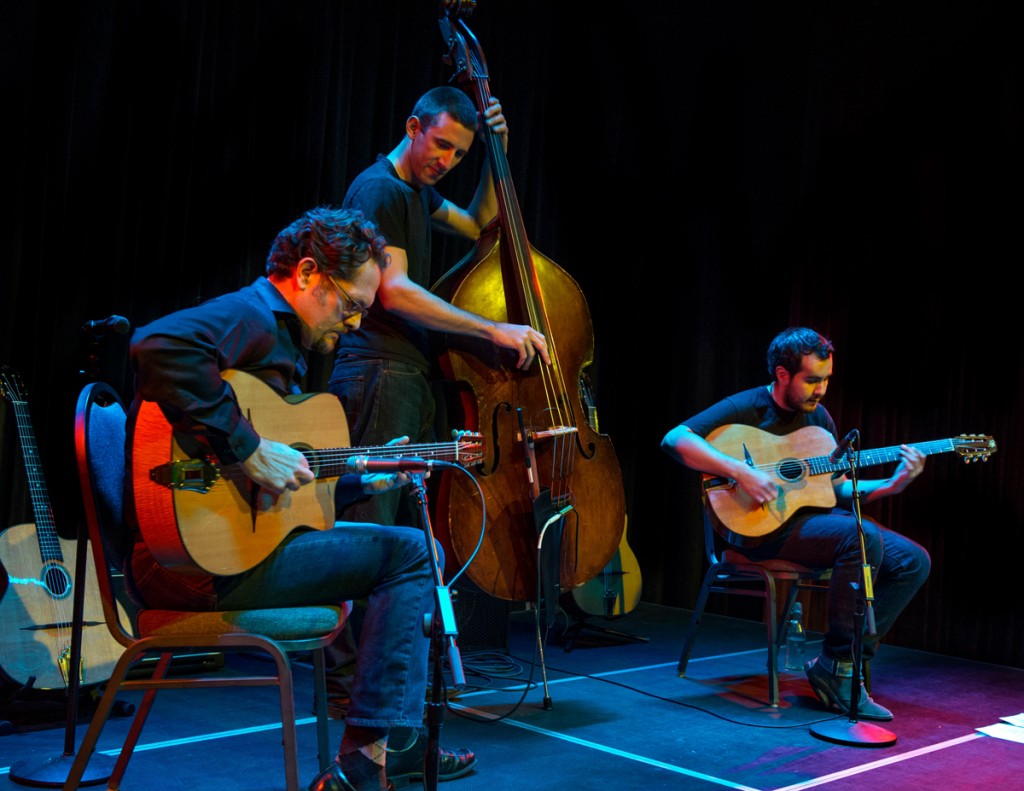
14 Ultrafaux
While one wouldn’t suspect it from watching him in performance, the music that guitarist Michael Joseph Harris (48) composes for his acoustic trio, Ultrafaux, challenges him as a player. The band’s Django Reinhardt-inspired gypsy jazz sound, which draws on a variety of influences, required a great deal of rethinking his guitar technique. “I found it a lot more freeing than previous genres I was writing in,” Harris explains. “It still allows for exploration of all kinds of other rhythms. It’s based in this traveling music mixed with jazz. I mean, how much more open can you be?” The band, which includes guitarist Sami Arefin and upright bassist Eddie Hrybyk, takes its high-energy music on the road this summer and fall. Ultrafaux will tour California in July, and in the fall will be featured at a gypsy jazz fest in Maine and a Reinhardt-related show in Manhattan, for which Harris is working with a theater designer. “I’m trying to take people on a little bit of a deeper journey through the music,” he says, “and provide a more theatrical experience.”
> Hear Ultrafaux at the Mobtown Ballroom on May 6. —M.S.
15 Todd Marcus
Dissatisfied with his clarinet, Todd Marcus adopted the considerably more unconventional bass clarinet to drive the straight-ahead jazz he writes and plays as leader of everything from a duo to a nine-piece jazz orchestra. “It just felt like there was so much more possible on the bass clarinet,” says Marcus, 40. “I love its darker textures and lower range.” Marcus’ three albums to date —one with a quartet, two with the orchestra—reflect a diverse repertoire, from muscular hard bop to a more cerebral, textured sound that incorporates Middle Eastern influences, almost all of it original compositions. Right now, he’s working on the suite, “On These Streets,” a collection of “pieces that portray the multi-dimensional qualities of my West Baltimore community, Sandtown,” scene of civil unrest in the wake of Freddie Gray’s death last year. Rather than dwell on the neighborhood’s much-documented problems, Marcus wants to depict “the strong sense of community that exists here, the perseverance of residents.”
> Hear Marcus lead a quintet featuring clarinetist Don Byron at Caton Castle on May 21. —M.Y.
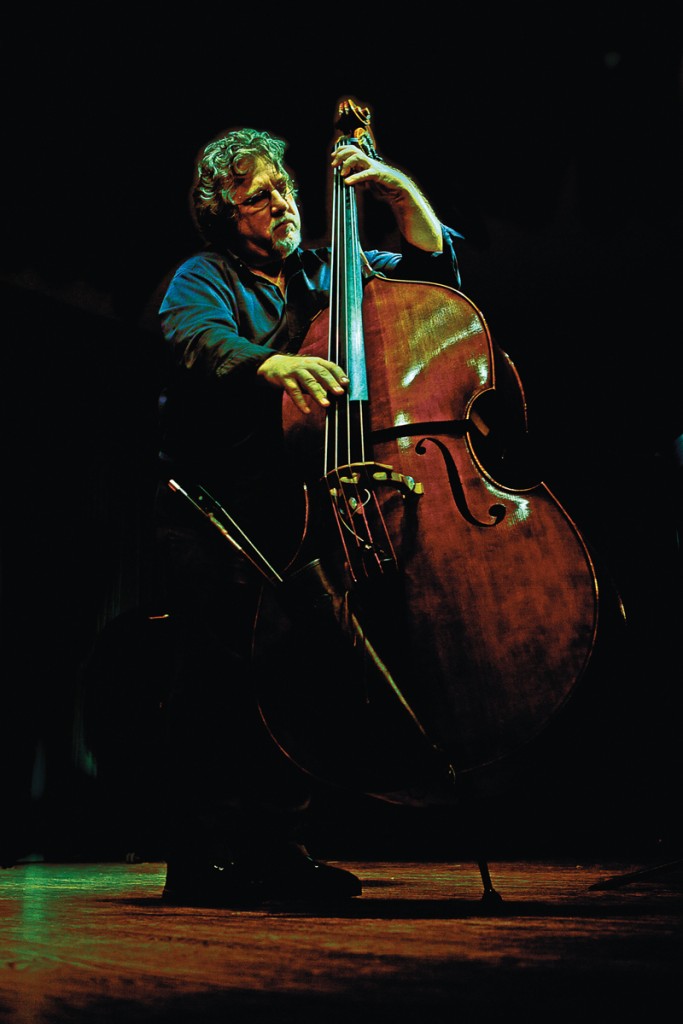
16 Michael Formanek
Over the past 35 years, bassist/ composer Michael Formanek has compiled a staggeringly impressive resume while intrepidly exploring new jazz vistas: leader of his own quartet, quintet, septet and the 18-piece (plus conductor) Ensemble Kolossus, plus solo work; a collaborator with leading players such as alto saxophonist Tim Berne; sideman with pianist Uri Caine and Elvis Costello; and, locally, head of the jazz orchestra at Peabody Conservatory, where he teaches bass and jazz history. “My interests shift around from time to time, and I always feel obligated to indulge them,” notes Formanek, 58. “It’s always the way I’ve worked, as a player and as a composer, and I feel that it is an essential part of who I am as an artist.” His recent albums with the Michael Formanek Quartet, 2010’s The Rub and Spare Change and 2012’s Small Places, elicited critical praise, and this year’s The Distance, with Ensemble Kolossus, allows the composer to, as he puts it, “tell a larger and more nuanced story” than on his small-group recordings.
> This spring and fall, Formanek, as part of the guitar-bass-drums trio Thumbscrew, tours Europe and the U.S. —M.Y.
17 Foghound
When drummer Chuck Dukehart (42) first played with the members of what would become Foghound, the band was cranking out a cow-punk-y, country-rock-y kind of music. Dukehart wanted to get into something heavier, more in the vein of Black Sabbath and doom and stoner rock. After guitarist and vocalist Bob Sipes played a heavier riff during practice one day, Dukehart got his wish. “We ended up writing a song right away, and the next thing we know, we’re throwing out that whole set they had,” Dukehart says. “Bob actually had a stockpile of all these riffs he never got to use in any bands.” Within a couple of months, the band, whose four members are all in their 40s, had an entire set of new, hard-driving, riff-based rock songs that they’ve taken on tour, gigging as far away as Massachusetts, North Carolina, West Virginia and Pittsburgh. Its second full-length album, The World Unseen, is due out in June via California-based label Ripple Music. Foghound plans to hold a Baltimore CD release party at a later date.
> Hear Foghound at The Depot on September 16. —M.S.
18 Eze Jackson
MC and singer Eze Jackson (35) thrives in collaborations. He’s a staple at the Baltimore Boom Bap Society, a curated monthly performance of improvised hip-hop with an ever-changing backing band. And he hosts Bmore Beat Club, a monthly networking event for beatmakers, MCs and rappers. In May, Jackson tours as part of the Rap Round Robin, wherein three local acts and three national acts switch off performing songs on three stages set up around a room. He’s also doing a small tour with the Taiwanese musician Twagie. In addition to his solo music, Jackson is putting together a collaborative project called Traveling Man that will feature a number of other MCs. The live hip-hop band he fronts, Soul Cannon, also has an album finished and awaiting release. What motivates Jackson? Baltimore, of course—the city he’s called home since the age of 9. “A lot of my material comes from the experiences,” he explains, “the struggles and the multifaceted nature of the people who live here. There’s so many different types of amazing people here.”
> Eze Jackson performs on the Rap Round Robin tour throughout May. —M.S.
This article appears in the May/June 2016 issue of STYLE.


